I recently had a reader email this question, and thought it would make for a good blog post:
We get brown water stains on our siding over the winter, but they mostly go away over the summer. Will you perform an inspection for those stains only (not a whole-house inspection)?
While we’re happy to conduct single-item inspections to troubleshoot problems exactly like this, this particular situation is so common that it probably doesn’t need an inspection. The stains on the siding are the result of moisture; that much is for certain. When water runs through the wood and wall sheathing, it picks up tannins in the wood and leaves dark stains on the siding. If the home experiences ice dams and the stains start at the soffits and run down the siding, they’re probably the result of water leaking through the roof as a result of the ice dams. The illustration below from The Ice Dam Company shows the path of the water.
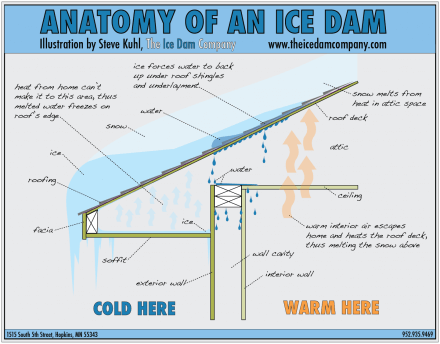
Here’s an extreme example of what you might see on the side of the wall during the winter:
Here’s a close-up photo showing some ice turned brown from the tannins in the wood:
Here are a couple of photos showing what stained siding looks like after all the ice is gone.
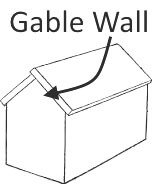 So ice dams are one possibility. In this particular case, I got a little more information from the homeowner and decided the stains probably weren’t the result of ice dams. When stains also show up on gable walls, they definitely aren’t the result of ice dams.
So ice dams are one possibility. In this particular case, I got a little more information from the homeowner and decided the stains probably weren’t the result of ice dams. When stains also show up on gable walls, they definitely aren’t the result of ice dams.
When siding stains appear in random areas during the winter, it’s the result of moisture migrating through the walls during very cold weather, condensing as frost, then melting again once the outdoor temperature warms up. That’s the long and short of it, but there are a number of things that will increase the potential for water stains to show up on siding.
Cold Weather
The colder it is outside, the greater the potential for frost accumulation in the walls and attic. When there is an extended period of unusually cold weather like we had last winter, the potential for frost accumulation will increase as well.
Humid Air
The more humid the air in your home is, the greater the potential for frost in the walls and attic. Do what you can to lower humidity levels; the most obvious “no-duh” thing would be to turn off your whole-house humidifier if you have one. A few other ways to lower indoor humidity levels are:
- Install timers on your bathroom exhaust fans that will run the fans for an hour at a time, and use the fans.
- Install bathroom exhaust fans in bathrooms that are used for showers or bathing if not present.
- If the kitchen hood fan exhausts to the exterior, use it while cooking.
- If you have too many plants (or weeds) in your home, fix that.
- If you have a crawl space with no vapor barrier, fix that. Crawl spaces with dirt floors are major contributors to indoor humidity.
- If your home doesn’t have a ventilation strategy, add one. To understand what that means, please read this excellent article by Allison Bailes at the Journal of Light Construction web site: Choosing a Whole House Ventilation Strategy.
- Read the article I just linked to above. Seriously. This will make the rest of this blog post make more sense.
Combustion Air Duct Connected to the Furnace Return Plenum (AKA – “Supply Only” ventilation)
In Allison Bailes’ article above, this would be described as a “Supply Only” ventilation system for the home. When the blower fan on the furnace runs, it pulls air into the home via the duct that runs to the exterior of the home. This puts the home under positive pressure. Of course, all of that air coming in needs to leak back out… somewhere… right? Of course it does. It leaks through a million little holes in the walls and ceilings. It leaks through outlets, switches, and countless other penetrations. This is how moist air gets into the walls. This is a bad way to ventilate houses in Minnesota. Check out my blog post on this topic for more info: Combustion Air Duct Connected to Return Plenum
Improperly Balanced HRV/ERV
If an HRV or ERV isn’t properly balanced, it can put the house under positive pressure. This increases the potential for air to leak into the wall cavities.
Unbalanced Ductwork
Unbalanced HVAC ductwork can cause pressure problems. Leaky or excessive return openings in the basement can put the basement under negative pressure, while the upper levels are put under positive pressure. As I mentioned in my blog post on frost in the attic, one simple test to find out if your basement “sucks” is to position a door to the basement about 1″ away from being closed, then turn the furnace fan on. If the door closes by itself, it’s an obvious sign that the ductwork is not properly balanced.
There are more factors than these, but these are a few of the most obvious ones. If a home has never had stains on the siding in the past but stains recently started showing up, you’re probably scratching your head wondering why, right? The simple answer is that something changed, and the most likely change was that you decreased the ventilation in your home by accident.
Turning off or disabling an HRV (air exchanger) would be an extremely obvious example, but that’s a little too “on the nose”. If that happened, you already know what you did. A far more likely but less obvious cause for decreased ventilation in a home would be replacing an older 80% efficient furnace with a new high-efficiency, sealed combustion furnace. That will make for a major unintended change in ventilation; check out my blog post from over five years ago on that topic: New High Efficiency Furnace, New Moisture Problem.
Another common cause of decreased ventilation is having air sealing performed in the home – especially in the attic. Attic air leaks are also known as attic bypasses. This is actually something that is now required by law in Minnesota when having attic insulation added: Minnesota Department of Commerce: “Beware the Insulation Contractor Who Does Not Include Air Sealing”. When these air leaks are sealed, less air leaves the home, so less air enters the home. That means a decrease in ventilation, which means new problems will probably show up… such as stains at the siding.
Side note: I’ve been recommending Cocoon for insulation jobs for the past couple of years, because they take all of these factors into account when they work on homes. Check out their guest post on my blog for more on this topic: Unintended Consequences of Adding Insulation.

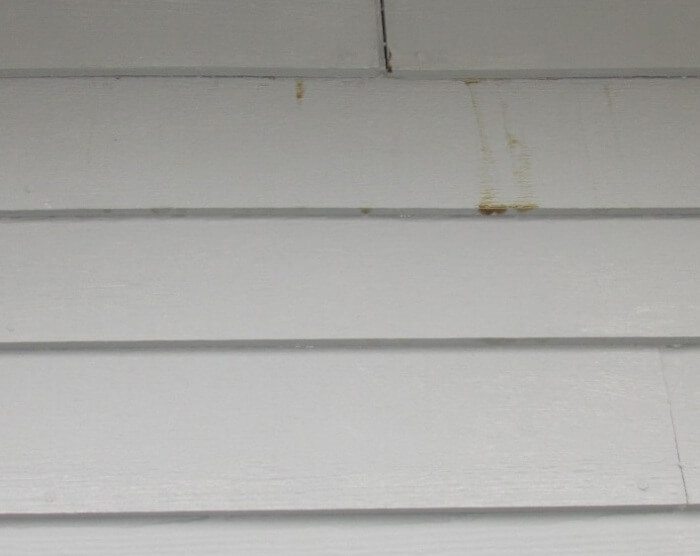
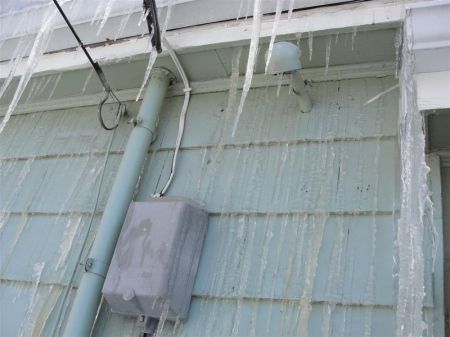
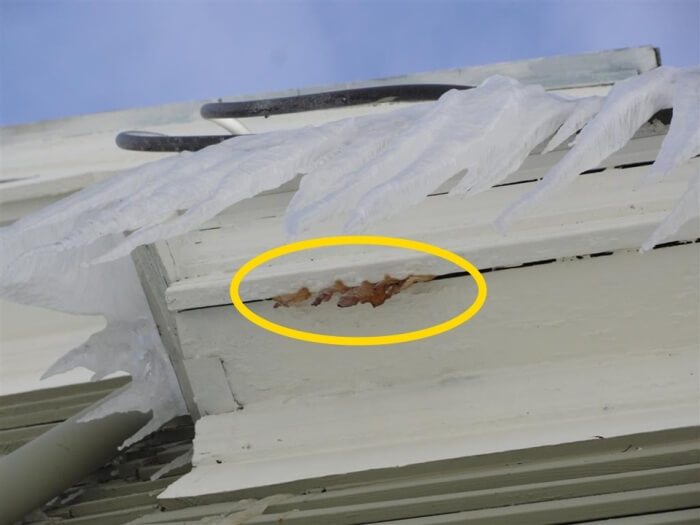
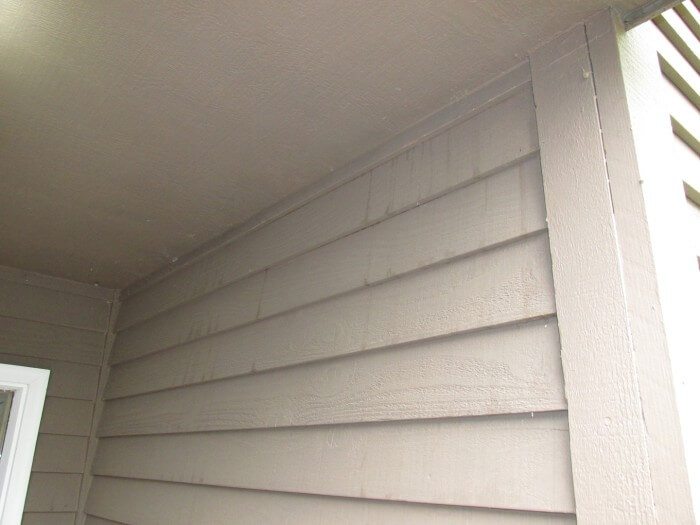
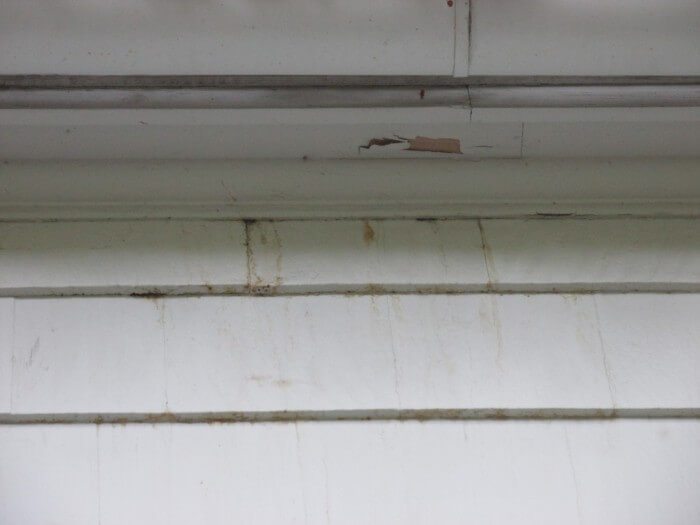
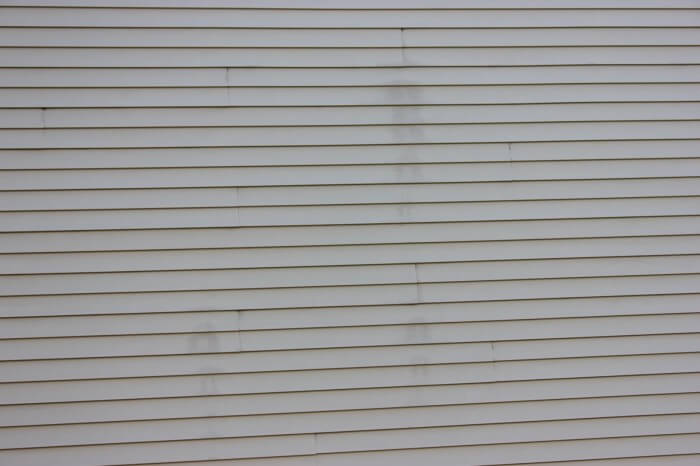
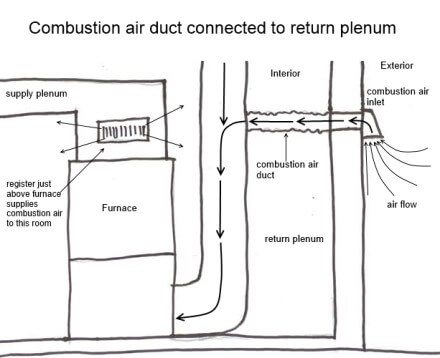
Photos from New Construction Home Inspections, Part IV | Structure Tech Home Inspections
November 11, 2014, 5:49 am
[…] or positive pressure, neither of which is usually good. Check out my recent blog post about siding stains; putting a house under positive pressure would contribute to stains like that. If the balancing […]